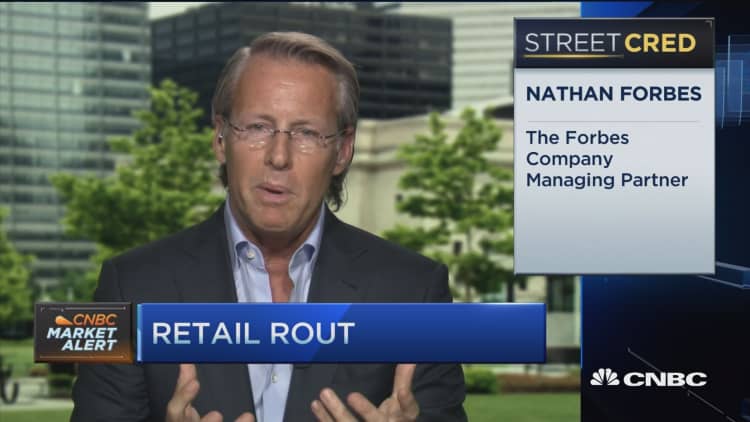The weather, Amazon and the sluggish economy were all cited as reasons for this season's weak retail earnings. However, another, less-talked about threat is hovering over the beleaguered sector: so-called resale sites.
This subset of e-commerce, which is aimed at consumers who interact socially to buy and sell items online, is on the rise thanks to fashion apps like Poshmark, thredUp and Tradesy. While the notion of consumers selling items online is not a new phenomenon, experts say this method of shopping is more focused, because users seek out a particular style rather than search for a specific item.
"It's almost like you can follow a stylist, peek into their closet and get items cheaper. It's like having a personal shopper," says Stacey Widlitz, president of SW Retail Advisors.
Read MoreFor brands, your Instagram feed is better than Vogue, Time
Katherine Power and Hillary Kerr, co-founders of Clique Media Group, told CNBC the retail landscape has shifted in profound ways. Part of the problem for traditional retailers is that they choose to go out and find the audience that will come to them based on the brand that exists. But new and more nimble online retail companies are creating products specifically catered to a group.
Power and Kerr, who operate the fashion website WhoWhatWear.com, said social media is of paramount importance in this changing retail space. As the landscape evolves, Power says we may see certain brands die off, thus creating space for new players in the marketplace.
"If you don't evolve there will be new up-and-comers who will come out and speak to that generation exactly how they want to be spoken to," Power said.

It's all part of a greater boost to online shopping because of social networks, says Poshmark founder and CEO Manish Chandra. The Poshmark app has roughly 1.5 million users, and allows shoppers to follow each other's 'closets' to buy, sell and share new and used clothing and accessories.
Chandra says people want that social experience, and brands are being slow to react—even though many retailers have aggressively pushed their own online sales.
While mobile shopping is a growing trend, it still makes up a small subset of online shopping and overall retail sales. According to Comscore data, 19 percent of total digital commerce spending is from mobile, whereas desktop shopping drives 81 percent of total digital commerce spending.
Finding a 'new normal'
Nate Forbes, a mall developer and Managing Partner at The Forbes Company, says traditional retailers are trying to find a new normal in an increasingly mobile world.
"The whole sector is being dragged down and we're at a point in time where the consumers and the total industry is trying to figure out what the future of the mall business is," Forbes told CNBC's "Closing Bell" recently.
Forbes, however, thinks this lull will be short lived. He added that once a new normal is found, retailers will eventually see sales increases in stores. A combination of fast fashion, getting items into stores quickly from the runway, and luxury will be key drivers in getting shoppers physically into malls, he added.



